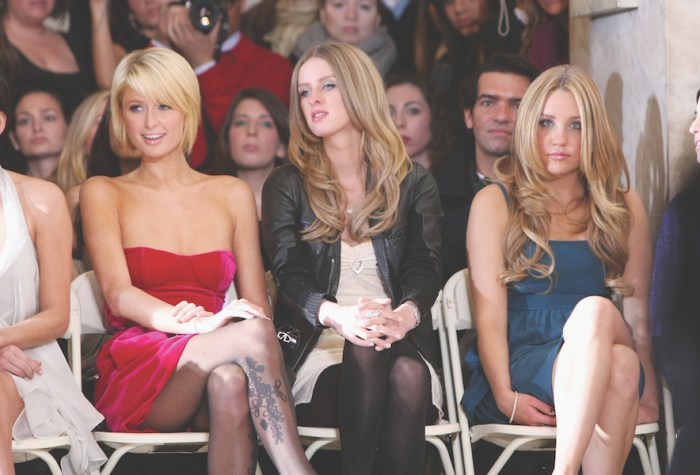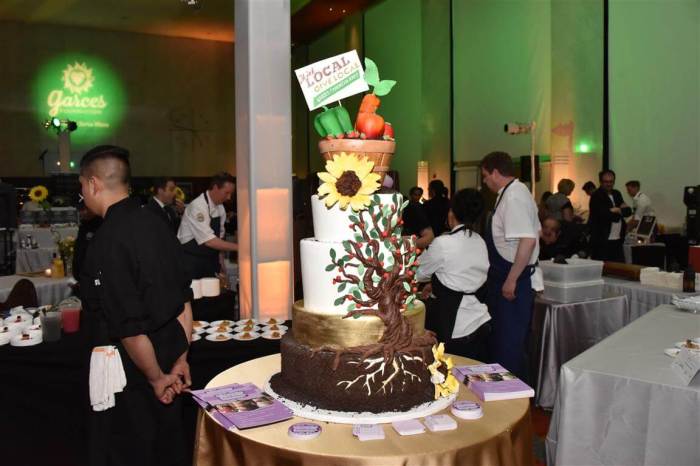 In Berlin, the young like to hang out on the Spree River across from Museum Island.
In Berlin, the young like to hang out on the Spree River across from Museum Island.
Credit: Schönberger
New York City was once a glorious wasteland. Three decades ago the middle class had been scared away, vowing to return only when a mayor Disneyfied the Gomorrah that was Times Square. In their place artists, who refused to hold steady jobs and subsisted on gallery opening cheese, filled up what are today multi-million dollar apartments, partying through a last hurrah before the rich muscled their way back in.
Though some locals compare Berlin to New York in the ’80s (or even the city during the raucous Weimar period that preceded Hitler), the German capital isn’t quite so decadent. It’s a more manageable bacchanalia (albeit one that when it goes crazy goes far crazier, though let’s leave it at that). As a guide tells us, if you see someone in Berlin at 8 a.m. with a beer in their hand, you can’t be sure if they’re going home or heading to another club.
But one can party all night only to return to a nice home, rest up and then head out for an affordable but palatable meal. (One restaurant in pert Mitte, Der Hahn Ist Tot! — or “The Rooster is Dead” — offers three courses for 20 Euros. Try the coq.) It’s a clean metropolis, every block, fit with trees and cobblestones, an Instagram dream. The (of course efficient) subway system is downright adorable, with cars plastered with what look like grandparently wallpaper.
There are chunks of mega-prosperity: Centrally located Charlottenburg, Wilmersdorf and Tiergarten — the latter housing the second largest urban park in the country — promise boutiques and designer brands. But the hip don’t live here, in what’s now dubbed “City-West.” (The brand new 25Hours Hotel, housedin the old Bikini buildingin Charlottenburg, is like Berlin’s even nicer version of NYC’s Ace Hotel — and a rare oasis of cool in City-West, with sleek, design-heavy rooms, some of which overlook an actual zoo. Its bar, the Monkey Bar, is even considered the trendiest bar in the area.)
 Laidback, inexpensive Kreuzberg boasts its share of quaint cafes.
Laidback, inexpensive Kreuzberg boasts its share of quaint cafes.
Credit: Provided
Instead those in the know dwell in places like Kreuzberg in the east (though south of what’s left of the Berlin Wall), Prenzlauer Berg or Mitte in the center-north. The rents are getting higher, if not quite New York City higher, and parts of it are being settled by the onetime youths who partied, paired off and now strut around with strollers, making their own Park Slope in areas once ruled by the Stasi secret police.
As with any youth-dominated locale, biking is encouraged, though the many urban cyclists are less rude than the ones in America. (The worst you’ll get as a clumsy pedestrian is a bell.) A bike tour is a great way for tourists to scale a diverse and always surprising town; hit up one of the many tour units, including Berlin on Bike, who will point you to the obscure sights off the traditional tourist path.
This is a modern city, which is to say globalized, which is to say American-friendly. It’s said that ex-pats have lived here for decades and never learned the language. But it’s now gone further: Some of the waiters don’t even know German. You might want to drop a “danke schoen” and a “tschuss!” (the more casual “bye”) at the end of a transaction, but only the overachieving (or the nice) need say more. (This is especially a shame since, technically speaking, there’s less words to remember. The German language loves to compound words upon one another, to the point where English has three times as many words.)
 The Monument to the Spanish Civil War is a rare Socialist-era statue still standing.
The Monument to the Spanish Civil War is a rare Socialist-era statue still standing.
Credit: Provided
Of course, Berlin is modern only because it has to be. Seventy years ago it was a city destroyed, 70 percent of it bombed into ruins. Only 25 years ago it was a city divided, with democracy on one side and communism on the other. Today’s Berlin is built on top of it, though what’s underneath has a way of poking through. Parts of the Berlin Wall still stand for the purpose of historical interest, its concrete owned by graffiti artists. Meanwhile sections of No Man’s Land, the vast area inside the border, remain unconquered, as there’s still, even now, always the possibility that a once dejected owner or ancestor of same could come back to claim stolen property. (It’s said if you want a profitable job in Berlin, get into real estate law.)
Ruins are peppered throughout the city, as are traces of the old, fallen East Germany. Look in the right place and you might see a GDR-era neon sign or the Monument to the Spanish Civil War (above) — the rare Socialist statue that wasn’t toppled, mostly because it commemorates an occasion that all (or most) can enjoy. Museums abound on life in the German Democratic Republic, the most popular (if not most rigorous) being the DDR Museum, an interactive recreation of life under Communist rule, complete with a soul-sucking living room, an East German car, an interrogation room and cell, even a restaurant that serves old, questionable classics.
The most ostentatious display of Berlin’s ghosts remains the Memorial to the Murdered Jews of Europe — a controversial block of coffin-shaped concrete slabs, or stelae, whose ambiguous design allows for projection, or charges of inadequacy. (Note, as its critics have, that it doesn’t even specify which “murdered Jews” it commemorates, though one would have to be willfully thick.) Children (and adults) play hide and seek among or scale its jutting blocks. That many ignore its intentions is intentional; it’s been designed to simulate how easily any society, not just Germany in the 1930s, can slide into the unthinkable. It’s the quietest punch in the gut imaginable. (For a more covert and no less despairing memorial to the past, look for the modest, golden plaques, noting disappeared Jews, embedded on certain sidewalks.)
 The doner is one of the great pieces of Berlin street/drunk food.
The doner is one of the great pieces of Berlin street/drunk food.
Credit: Provided
Even with such a fixation on the past — and the undying necessities of tourist traps like the Brandenburg Gate and the Reichstag — the idea in Berlin is progress. A large Turkish population has long dwelled in the city, birthing one of the two chief forms of street food: the doner, a gyro- or kebab-like meal that stuffs meat, assorted veggies and feta (or just veggies and feta) in a pita or wrap (or, now, a box, if you’re done with bread). These are everywhere, but Mustafa’s in Kreuzberg is the one of the ones to beat, with long lines even in the sporadic rain. The other go-to drunk belly filler is the currywurst, which pairs a classic, cut-up sausage with a special ketchup and a few fist-bumps of curry powder. These are everywhere as well, most prominently in ubiquitous chain Curry 36, but for a slight step-up, try Konnopke’s Imbisse in Prenzlauer Berg.
Not all food tends to riff on old German staples. While there are scores of beer gardens in every neighborhood — and, in cool Kreuzberg, the Prinzessinnengarten, which combines food and (not only alcoholic) drink with a flea market — the restaurants are international, including a proliferation of Israeli joints such as Mani, located in the Hotel Amano in Mitte, or the aforementioned Monkey Bar in the 25Hour Hotel. (Tel Aviv-ers love to take the not long flight to Berlin.)
All of this may not last long. Rents in Berlin aren’t skyrocketing, but some of the lazier are already being priced out. On top of that, it’s a city like many in the American Northeast: lovely (if occasionally oppressively hot) in the spring and summer, brutal in the winter. (One local says he likes to decamp for Israel when the weather turns brittle.) For now, and for a good while, it is, to borrow a line from “The Simpsons,” a city that works. Feast on it before it turns into Manhattan.
 One of many adverts for Martin-Gropius-Bau’s David Bowie exhibit, running through August 10.
One of many adverts for Martin-Gropius-Bau’s David Bowie exhibit, running through August 10.
Credit: Provided
We could be heroes: On the Bowie exhibit at Martin-Gropius-Bau
Berlin is certainly not lacking in museums, but right now only one has David Bowie. Running through August 10 and bound for Chicago in the fall, the Bowie exhibit at the spacious Martin-Gropius-Bau, near Alexanderplatz, runs through the career of a professional shape-shifter. His many costumes are major draws, though the actual structure of the exhibit fumbles when it comes to mapping out his many changes. After rooms dedicated apiece to his youth, to “Space Oddity” and to his “Top of the Pops” debut, it inelegantly crams “Diamond Dogs” and “1. Outside” eras into the same space.
The exhibit springs back into focus, predictably, once it gets into his Berlin period from the mid-to-late ’70s, when the superstar — burned out and looking to snuff a cocaine addiction — headed to the divided city. Recoup he did, as well as hit on ambient music and the angular, electro-driven likes of his so-called “Berlin Trilogy” of “Low,” “Heroes” and “Lodger.” In truth, he only recorded the middle one in Berlin, and hearing it in its homeland can greatly and profoundly deepen it. The song “Heroes” especially sounds even more powerful in Berlin. Recorded in the Hansa Tonstudio near the Wall, its lyrics about love and empowerment and conquering become a battle cry for those stuck on the other side, sometimes actually dying to get out.
Let the German-language version of Bowie’s “Heroes” (“Helden”), which doesn’t actually feature the German language until two verses in, carry you out:
Follow Matt Prigge on Twitter @mattprigge


















